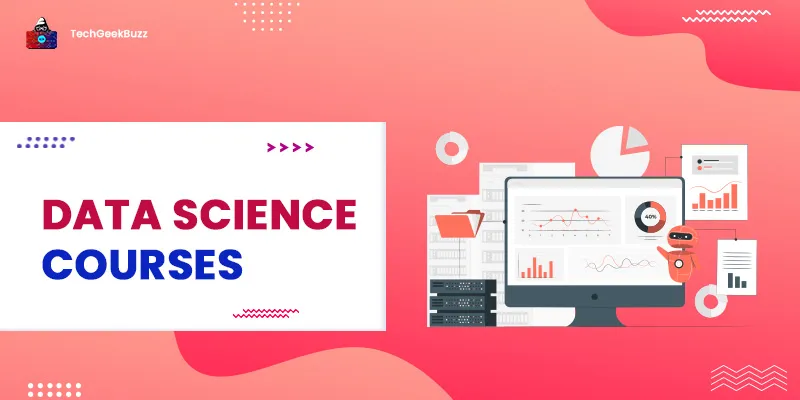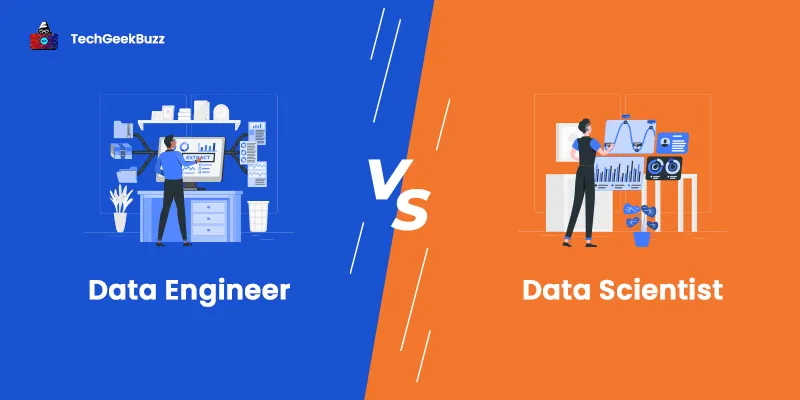Have you ever come across a pie chart that depicts certain information? Well, it is one of the best approaches to depict statistical information visually. Reading a long paragraph or spreadsheet containing statistical data might seem more tedious than looking at a pie chart and understanding it. That's the power of data visualization.
With large amounts of data being collected every day by businesses, representing that data in an easy-to-understand format becomes essential. One of the ways to represent complex and large amounts of data effectively is through data visualization.
Through this article, you will get familiar with the concept, its importance, types, and key applications.
What is Data Visualization?
Data visualization is a method of representing or translating large data sets into different visual formats, like graphs, maps, pie charts, and so on. In simple words, it is a graphical or pictorial depiction of data. It is easy for the human mind to comprehend data represented in visual formats and hence, helps in identifying patterns, insights, and outliers within the data.
The amount of data in data sets is enormous, and it becomes challenging to understand that data. Visualization compresses this extensive data and transforms it into a pictorial format using graphical elements, like maps, graphs, and charts. It is one of the most significant components of Data Presentation Architecture (DPA). DPA is a skill-set that involves identifying, manipulating, locating, and presenting data in an understandable format.
Moreover, data visualization is one of the stages in the data science lifecycle . The use of data visualization is evident in a wide variety of sectors, ranging from education to businesses. For example, teachers can use visualization tools to display students' test results, computer scientists use them in big data projects, executives use data visualization to share information with clients or stakeholders, and so forth.
In advanced analytics, visualization plays a crucial role in representing the outputs of machine learning algorithms written by data scientists. It becomes easier to interpret the visualized outcomes of complex algorithms instead of numerical results.
Why Does Data Visualization Matter?
Data visualization is the sole and effective approach for converting large data sets into visual and communicative formats. Moreover, businesses can leverage it for:
- Identifying issues that affect customer behavior.
- Representing data in an impressive and memorable format to stakeholders.
- Predicting sales volumes.
- Identifying the areas that need improvements or need the utmost attention.
- Deciding where and when to place specific products.
Also, here are some key benefits of visualization that you should know:
- It helps stakeholders or clients grasp information quickly and make wise decisions based on it.
- As data visualization accelerates the decision-making process, organizations can significantly improve their working and carry out activities rapidly.
- It helps organizations share their information with the audience in an understandable format, which increases the audience’s engagement and interest.
- It becomes easy to determine errors in data when we visualize it.
Types of Data Visualization
There are different tools available to represent data in pictorial or graphical format. Some of the most popular types of visualization are discussed as follows:
1. Line Charts
A line chart represents data that changes over time. A line graph, curve chart, line plot, and line chart are all the same. It represents information as a sequence of data points connected using a line segment. It consists of the x-axis representing the time, and the y-axis, representing the quantity.
The primary use of a line chart is to visualize data trends over regular time intervals. Many businesses and companies use line charts to find their monthly profits, for example.
2. Area Charts
An area chart, also known as an area graph, is a variation of a line chart. A particular area of this chart is filled with colors, textures, or hatchings to highlight its importance. This type of visualization is ideal for representing quantitative data graphically.
The only difference between the area chart and the line chart is that the area between the line and the axis is filled with colors, hatchings, or textures to indicate the quantity. There are three variations of the area chart, namely steam graphs, spline-area charts, and step-area charts.
3. Bar Charts
A bar chart is also known as a bar graph, and it represents the change in data over time. However, it is important to note that bar charts are ideal to use when there are multiple variables in the data sets. It represents categorical data using rectangular bars with specific height and width, corresponding to the value they represent.
Like the line and area charts, a bar chart also consists of the x-axis and the y-axis. The x-axis represents multiple variables that need to be compared, and the y-axis depicts the measured value. This type of data visualization helps us to compare multiple variables based on time.
4. Histograms
A histogram is similar to a bar chart. The only difference between a histogram and a bar chart is that a bar chart is used to find data trends over time, whereas a histogram represents frequency distribution over time. In general, a histogram consists of the x-axis representing the intervals of variables and the y-axis representing the frequency.
5. Scatter Plot
A scatter plot also uses a cartesian plane to represent the data. A scatter graph, scattergram, scatter chart, scatter diagram, and scatter plot are all the same. The primary purpose of the scatter plot is to determine the relationship between two quantitative variables, if it exists.
This type of visualization is suitable to represent values for two variables for a set of data. Also, it uses dots to represent data. Each dot corresponds to the value of one variable determining the position on the x-axis and the value of another variable determining the position on the y-axis.
6. Bubble Charts
A bubble chart is a variation of a scatter plot, and it is a type of data visualization that represents data graphically in three dimensions. The two variables of the data are represented using the cartesian plane’s x-axis and y-axis. Depending on these two variables, information is represented using a bubble-like point on the plane.
The points plotted on the plane act as a third variable, and the area of those circle points represent its value. The point representing the data can be presented using different colors.
7. Gauge
Gauge, also known as Gauge chart, speedometer chart, or dial chart, uses needles to represent information analogous to reading on a dial. It is ideal to use when you need to compare values between a small number of variables. You can use multiple needles on the same gauge or use multiple gauges to compare values.
8. Pie Charts
A pie chart or circle chart is one of the most effective data visualization types, especially for representing statistical data. It consists of a circle divided into slices, where each slice represents the relative size of data. Alternatively, we can say that each slice of a pie chart represents a numerical proportion.
9. Maps
When you need to represent geographically related data, a map is an ideal choice. In businesses, there is some data that is associated with location elements, and therefore, representing this data becomes easier using a map.
10. Heat Maps
A heat map represents numerical data in the form of a color-coded matrix, where each cell of the matrix contains a unique data value. The color scheme in heat maps follows the warm-to-cool approach. Warm colors indicate high data values, and cool colors indicate low data values.
11. Frame Diagrams
A-frame diagram is a type of visualization that is ideal for representing hierarchical data graphically. It has a similar structure as that of the tree data structure , and it consists of branches, which represent the level of the diagram.
Uses of Data Visualization
There are dozens of uses of data visualization. Below are some of the most common use cases:
- In sales and marketing, visualization tools play a vital role in identifying traffic trends over time.
- A choropleth map is used in the healthcare sector to visualize health data. This map represents multiple geographical regions or areas that are colored differently depending upon their numeric values.
- Scientists use data visualization, or specifically scientific visualization, to gain meaningful insights from their experimental data.
- In finance, professionals use candlestick charts to visualize the fluctuating prices of assets over time. In addition, this graph displays other information, like currencies, securities, commodities, bonds, and derivatives. Therefore, the price analysis of assets helps professionals make better investment decisions.
- Shipping companies also use data visualization to find the best global shipping routes.
Conclusion
Data visualization is a significant component of data analytics as it helps businesses to study and understand the data effectively to make better decisions. Also, there are several types of visualizations that one can use to represent and highlight meaningful data. We hope that after reading this article, you may have developed a good understanding of the importance of visualization. The rising popularity and importance of data visualization tools have opened up many lucrative career opportunities.
Therefore, if you wish to shape your career in this domain, you can prepare yourself for a variety of roles, such as Data Engineer, Virtualization Specialist, Data Scientist, or Data Analyst.
People are also reading:
- Best Data Science Bootcamps
- What is Data Analytics?
- Data Science Roadmap
- Data Science Career Opportunities
- Best Data Science Certifications
- Data Science vs Data Mining
- Big Data Frameworks for Data Science
- Data Science Process
- Data Science Applications in Finance
- Top Data Science Programming Languages
![What is Data Visualization? [A Beginner’s Guide]](/media/new_post_images/What-is-Data-Visualization.webp)



